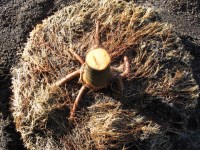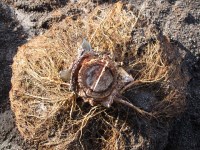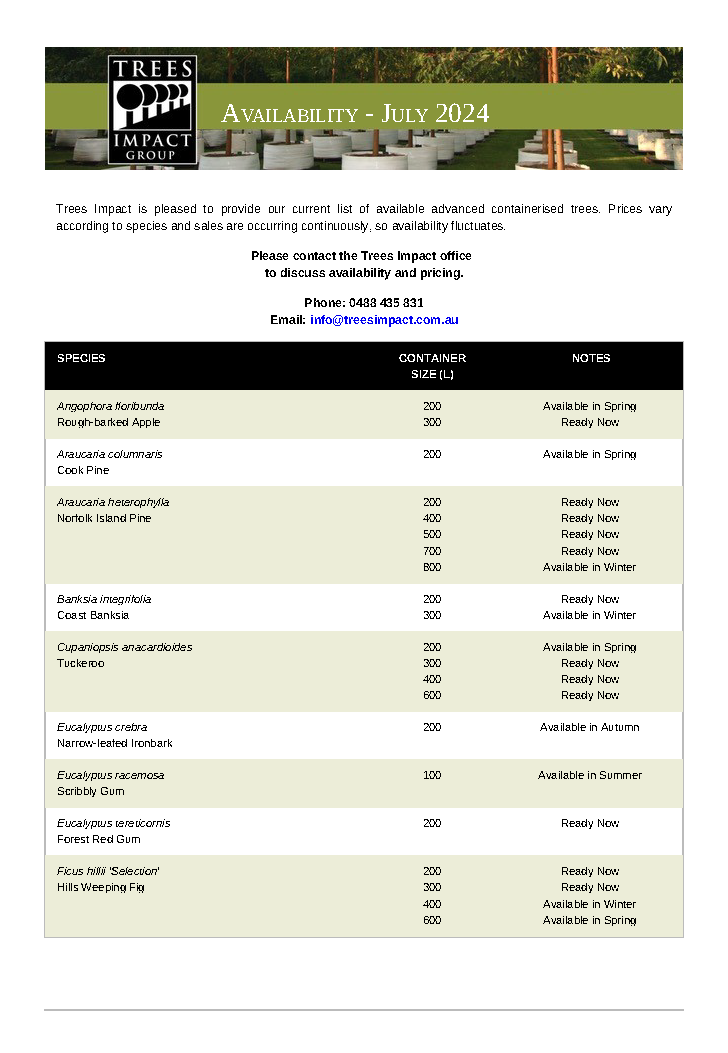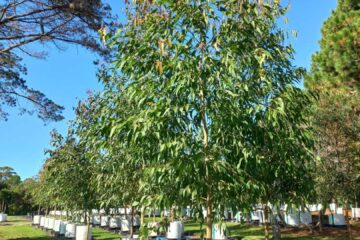It’s all in the roots!
ROOTS SHOULD NEVER BE “OUT OF SIGHT, OUT OF MIND”.
When trees with girdled roots are planted the visual, environmental and social benefits are all compromised. To make matters worse, where trees perform poorly or fail outright we are left with wasted money, wasted time, wasted opportunity and damaged reputations.
“Trees with intact girdling roots should not be planted.”
Professor Edward Gilman (University of Florida, Environmental Horticulture Dept.)
HERE IS THE PROBLEM
When growing trees in containers the interaction between roots and the container will lead to deformities in the roots. The most common of these deformities are girdling roots, created when the emerging roots make contact with the walls and base of the container and then track around the container edge.
If left untreated, either during production or at planting, girdling roots can cause a number of serious long-term problems, including:
- Strangulation:
When roots are girdled, the roots at the base of the stem grow around in circles. These circling roots expand, as the tree grows, often either strangling the tree at the stem base or causing the tree to snap-off at ground level in winds where the girdling roots have compressed and weakened the stem.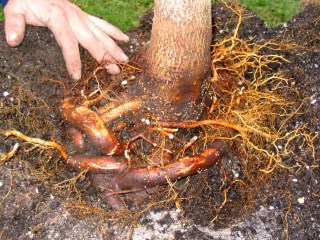
- One day, not too far away, the expanding trunk and the expanding circular roots are going to meet. The process of strangulation will then proceed. This tree is doomed and dangerous; and the problem has its genesis in poor management of root development back in earlier stages of production.
- Lack of support:
Strong stable trees are supported by strong root systems that radiate out from the base of the stem. These radiating roots provide mechanical support to the tree, gained by being attached strongly and permanently around the stem and through the anchorage gained by being attached to the mass of the soil they grow out into.Trees with girdled roots fail to provide the lateral support of a well-structured system. Their attachment is inferior and girdled roots don’t occupy the surrounding soil mass nearly as well as does a radiating root system. So, the anchorage is poor and long-term stability, especially during storm events, is compromised. - Lack of uptake:
In addition to providing physical support for the tree, roots are responsible for the uptake of water and nutrients from the soil. Water and nutrients are essential raw materials for tree growth. Girdled roots will have fewer potential growing points (due to a lower rate of division) reducing the tree’s ability to send new roots out into the surrounding soil. And, the circular nature of girdled roots means that the roots will tend to continue to grow in a circular manner (as opposed to a radial direction) dramatically reducing the soil volume explored and occupied. This smaller soil volume occupied means less water and nutrient accessed which in turn will lead to reduced growth rates and tree failures in tough times.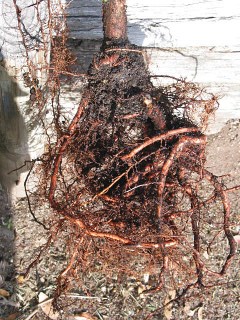
If planted, this tree has no future:
• It will be unstable because its natural engineering has been destroyed;
• It will lack vigour and be stunted because its roots will never properly reach out into the surrounding landscape for maximum moisture and nutrients; and
• Ultimately, it too is doomed and dangerous because of tight girdling roots close to the base of the trunk.
DOES IT REALLY MATTER?
Here are a few very blunt comments for some prominent Americans about girdled roots:
“Tree roots deformed within the first several months of propagation, in the nursery, could doom a tree to an early death.” …
“The consequences of root deformations may not become evident until the trees are older and well established. Trees with intact girdling roots should not be planted.”
Professor Edward Gilman (University of Florida, Environmental Horticulture Dept.) in his book “Trees for Urban and Suburban Landscapes”
“Trees may decline and prematurely die as a result of the stresses induced by stem girdling roots. Or, they may appear healthy and normal until they suddenly fail during a windstorm, breaking at or near the point where girdling roots have compressed and weakened the stem.”
Gary R Johnson (Associate Professor of Urban and Community Forestry at the University of Minnesota.)
“Fixing the girdling root problem is not easy. In many instances a native tree is specified but the tree dies of girdling roots, just when it was supposed to hit its prime. Until the nursery industry solves this problem, designers would be wise not to allow container-grown trees.”
James Urban (renowned US Landscape Architect and Arborist) in his book “Up by Roots”
ARE ALL CONTAINER-GROWN TREES REALLY LIKE THIS?
No, not all; but far too many. So, has the industry solved this problem? Not really. But some of us are trying and none harder than or with greater success than Trees Impact, widely acknowledged for setting the benchmark for the production of containerised landscape trees. Trees Impact has been adopting and refining strategies for more than 20 years with the aim of consistently producing trees that not only look great but also have excellent and reliable root systems. And we regularly check that our systems are doing what we want – through invasive and, often, destructive sampling of rootballs taken from everyday production. As one arborist said to Ross Clark at one of his interstate presentations:
“I have never seen rootballs as good as that and doubt anyone else here has either.”
These photos show the typical outcomes we are achieving with some good sized rootballs of trees taken from our production for destructive testing. Like that arborist, you will never have seen better.
